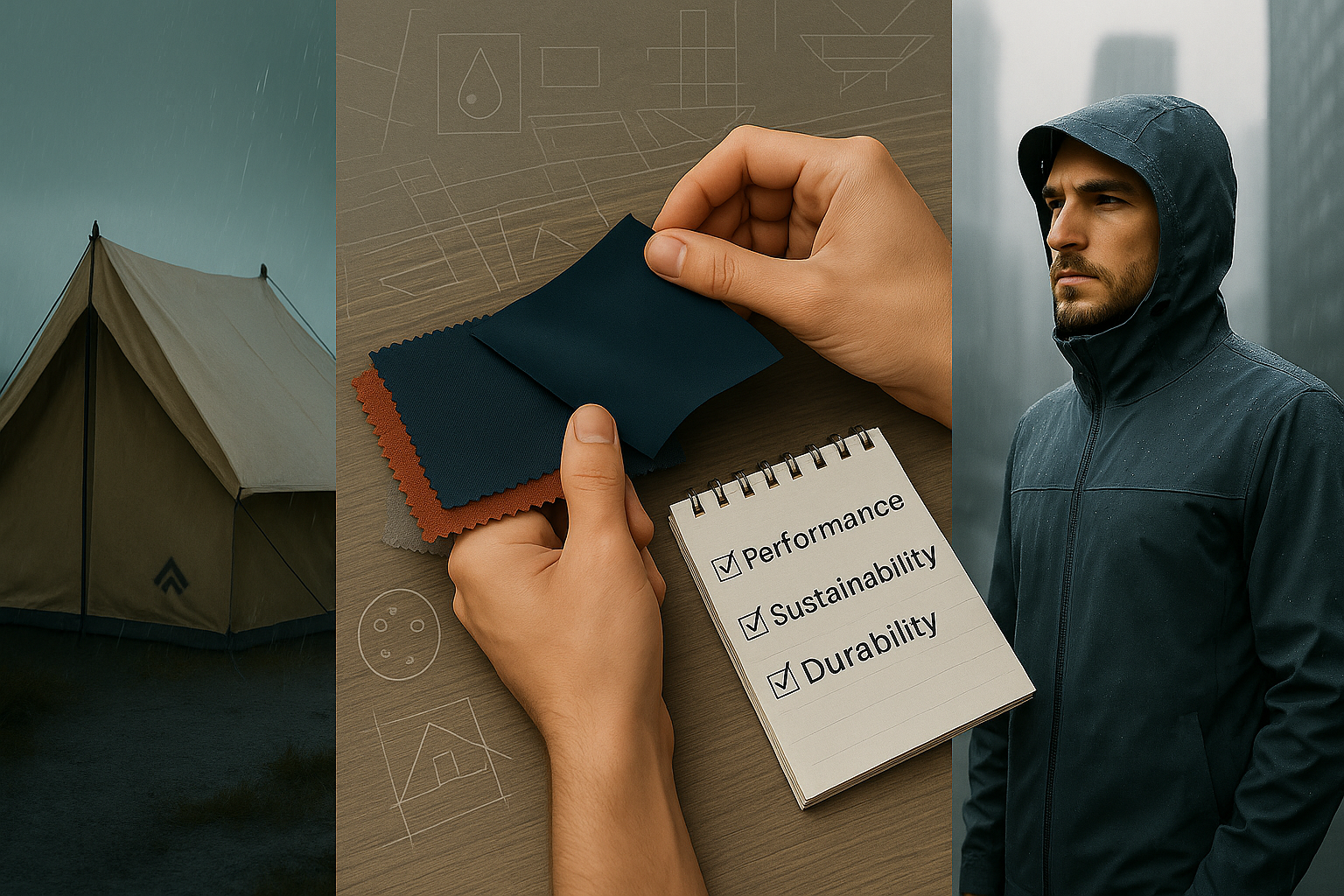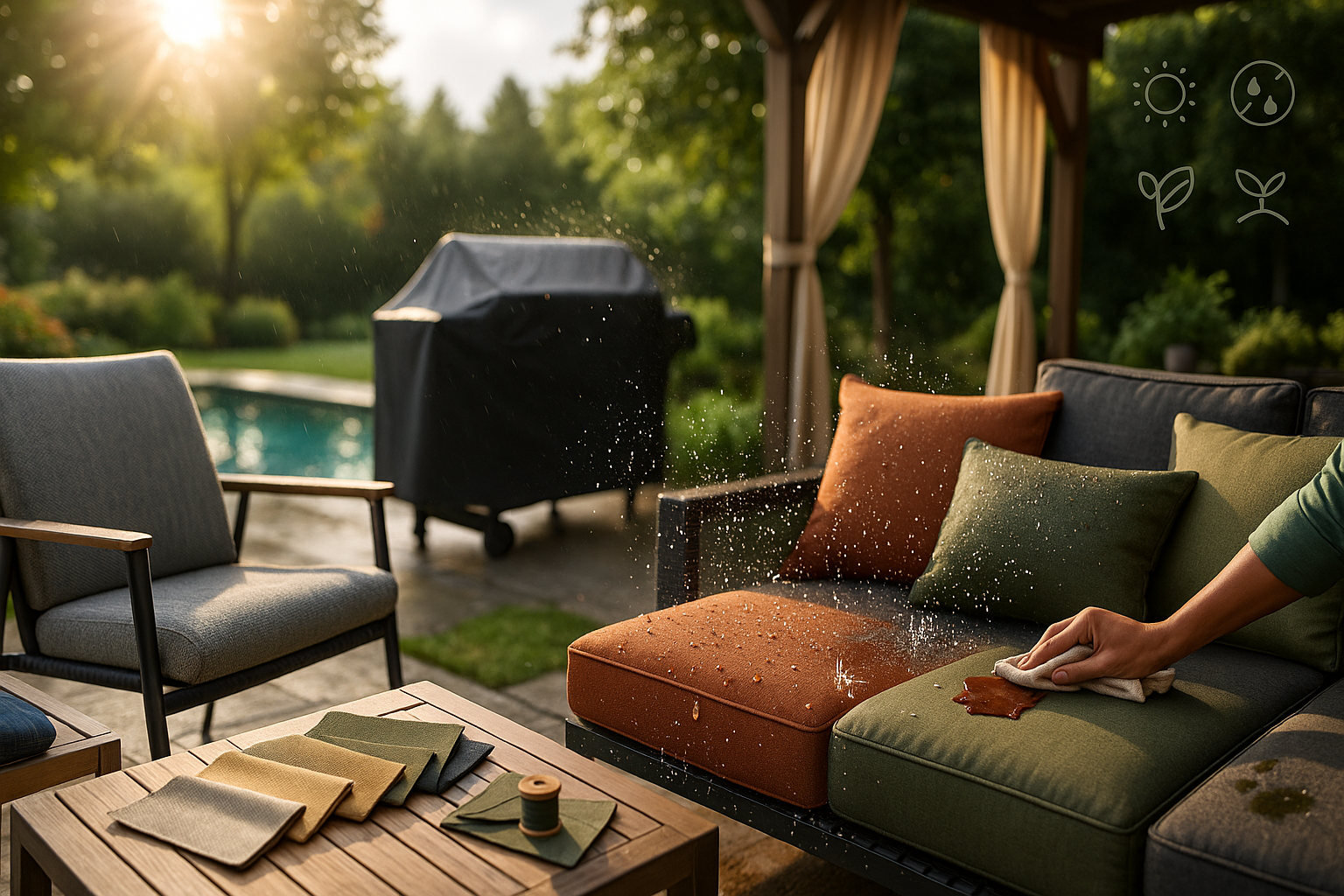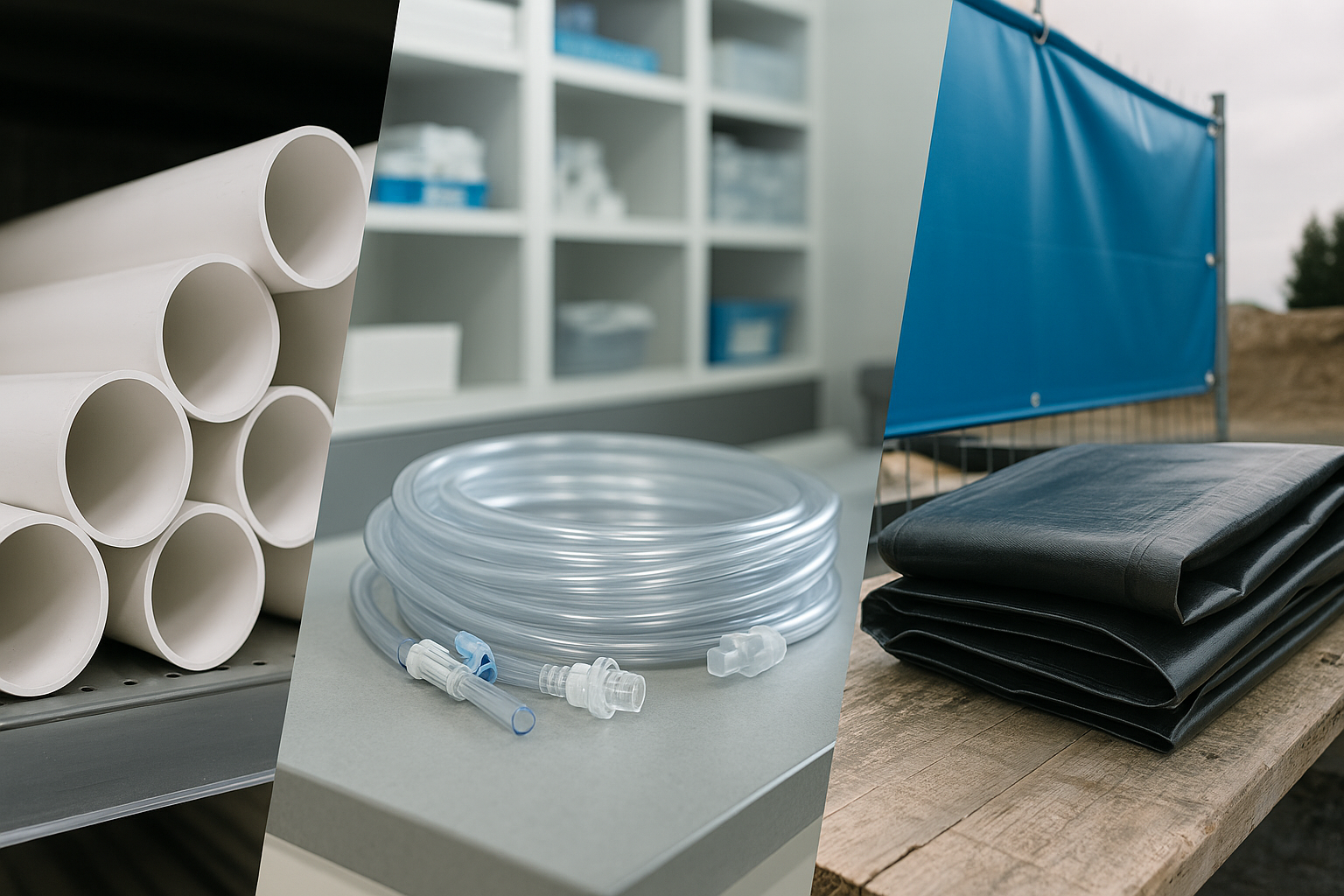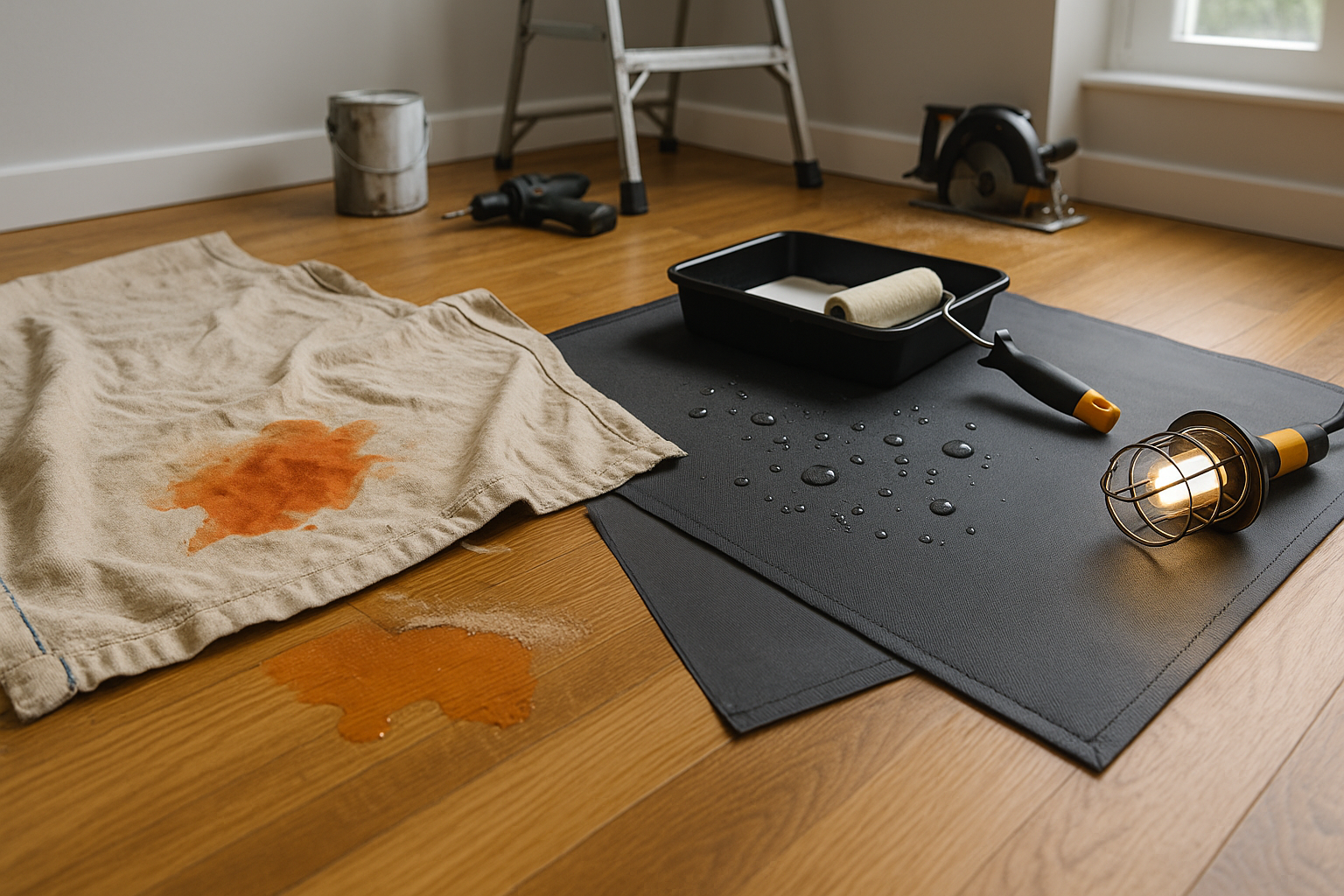
You’ve got a big job ahead: paint, dust, tools, chaos. The last thing you need is a drop cloth that slips, rips, or soaks through. Traditional drop cloths often make big promises—and leave bigger messes.
The issue isn’t just performance. Most drop cloths are made with materials, such as canvas fabric, that aren’t recyclable, aren’t reusable for long, and end up in the landfill after just a few uses. Whether you’re a pro painter or a weekend DIY-er, you deserve better protection for your floors, furniture, and wallet.
That’s where Renegade comes in. Our polypropylene-based alternative isn’t just built tougher—it’s engineered to last longer, clean easier, and reduce waste at every step.
In this guide, we’ll break down the common materials used in drop cloths, how they’re made, and why some options cause more harm than good. We’ll show you how polypropylene compares head-to-head with other fabrics and help you understand the smarter alternatives available today.
Whether you’re safeguarding your hardwood or carpeted floors against paint spills or lining your truck bed, you’ll leave here knowing exactly which drop cloth to select—and why Renegade’s tarps lead the pack.
How are Most Drop Cloths Made? And from What 5 Materials?

Most drop cloths may look the same rolled up on a shelf, but their composition makes a huge difference in durability, reusability, and environmental impact. Understanding the different materials available can help you select the right one for your needs—and avoid headaches on your next project.
Here are the five most common materials used to manufacture drop cloths:
- Canvas Fabric — Made from heavy cotton fibers, canvas fabric drop cloths are durable and reusable, but also heavy (anywhere from 8 – 22 ounces per square yard) and while technically washable, may shrink if washed. They absorb paint spills, which can prevent messes but also makes them harder to clean. Many canvas drop cloths are additionally coated in water repellent chemicals, which can be toxic.
- Polyethylene Sheeting — These lightweight sheets are water-resistant but tear easily and often shift during use. They’re single-use in many cases and can’t be recycled through typical curbside programs. Paint spills and stains also render them unacceptable for specialized plastic film recycling programs.
- Paper or Paper/Polyethylene Blends — Designed for one-time use, these materials are cheap and semi-absorbent. They often wrinkle or shred under pressure and aren’t suitable for long-term or outdoor work in the yard.
- Butyl Rubber-Coated Fabric — Offers excellent waterproofing and slip resistance, but is heavy and expensive. Often overkill for smaller or residential jobs.
- Polypropylene (PP) Fabric — Renegade’s signature tarp offering, PP is lightweight (5-7 ounces per square yard), durable, water-resistant, and can be recycled with our producer take-back program. Offers a premium, long-lasting solution that doesn’t compromise on function or eco-responsibility.
Buying the wrong material means more cleanup, cost, and waste. But one option stands out for ticking every box—and we’ll get to that next.
How Are Polypropylene Drop Cloths Different from the Rest?
Polypropylene drop cloths differ significantly from canvas fabric or polyethylene-based options, both in structure and sustainability. Unlike canvas fabric or paper blends that absorb liquids and hold stains, polypropylene is non-absorbent, which allows paint spills to be wiped away instantly. It’s also less prone to tearing or wrinkling compared to thin polyethylene sheets, making it ideal for repeated use.
Renegade’s tarp recycling program sets it apart in a sea of single-use plastics and landfill-bound cottons. Standard plastic drop cloths are rarely accepted in municipal recycling streams and canvas and paper drop cloths are not recyclable.
Renegade’s polypropylene materials, on the other hand, are designed with recycling in mind. When you’ve finally worn out your Renegade polypropylene drop cloth, return it to us so that we can send it to our recycling partners and then turn it into a new generation of Renegade products.
In terms of jobsite safety, polypropylene drop cloths also offer enhanced traction above other types of drop cloths. This added grip reduces the chances of slipping while walking or dragging equipment. Renegade tarps have a large seam around each edge that prevents curling at the edges, like canvas drop cloths, reducing tripping hazards on the job. And because Renegade’s fabric contains no PVC, lead, or phthalates, it’s safer to use indoors—especially in homes, schools, or healthcare environments.
| Feature | Renegade Polypropylene Fabric | Canvas Fabric | Polyethylene Sheeting | Paper/Poly Blends | Butyl Rubber-Coated Fabric |
|---|---|---|---|---|---|
| Tear Resistance | High – built for jobsite abuse | Moderate – weakens when wet | Low – punctures easily | Low – wrinkles and shreds | Very High – heavy-duty containment grade |
| Water Resistance | Fully waterproof | Low – water-resistant at best | Waterproof but pools, no absorbency | Water-resistant only | Fully waterproof |
| Stain Resistance / Cleanability | Excellent – paint wipes right off | Poor – absorbs and holds stains | Poor – not easy to clean | Poor – absorbs liquids | Good – cleans easily |
| Slip Resistance / Safety | High – textured surface, anti-curl seams | Moderate – can become slick when dusty | Low – slides around easily | Low – bunches or tears under foot traffic | High – strong grip even when wet |
| Weight (9′ × 12′) | ~5 lb – easy to carry | ~10 lb – heavy to move/stairs | ~2 lb – flimsy, tears easily | ~3 lb – light but fragile | ~15–18 lb – heavy and bulky |
| Average Usage Cycles | 100+ with regular use and cleaning | 100+ if kept dry and clean | 1–3 before damage or disposal | 1–2 at best | 150–200+ industrial-grade |
| Recyclability | Yes – via Renegade’s takeback program | No – typically ends in landfill | No – not curbside recyclable | No – mixed material, landfill-bound | No – complex mix, not accepted in recycling |
| Indoor Air Safety | Excellent – no phthalates, PVC, or lead | Natural, but may mold or rot | May off-gas VOCs | Often contain adhesives or coatings | May off-gas solvents or rubber compounds |
| Best For | Reusable jobsite, indoor/outdoor, long-term | Indoor painting or light-duty protection | Temporary, low-budget masking | Short-term interior projects | Harsh environments, high-risk containment |
8 Renegade Sizes Customized to Your Next Drop Cloth Needs

Choosing a drop cloth shouldn’t mean settling for disposable plastic or heavy canvas. Renegade’s polypropylene tarps give you high-performance alternatives that are durable, lightweight, and easy to clean—without sacrificing protection. Renegade has a variety of sizes readily available to suit your drop cloth needs.
- THE MINI TARP! (3’ x 3’) — A small but mighty solution for detail jobs or touch-ups. Great for counters, stairs, or focused paint zones. Stores flat and fits in any tool bag.
- 8′ x 6′ Renegade Heavy Duty Tarp — Covers furniture or protects against drips in narrow spaces. Its compact footprint makes it ideal for home repairs or apartment maintenance. Durable and resistant to tearing.
- 10′ x 8′ Renegade Heavy Duty Tarp — A versatile mid-size option that performs indoors or out. Use it to take care of all your tools and gear during remodels. Flexible enough to conform to irregular surfaces.
- 12′ x 9′ Renegade Heavy Duty Tarp — Excellent for large furnishings or wall-to-wall coverage. Designed for job sites where durability meets portability. Folds and unfolds easily.
- 10′ x 10′ Renegade Heavy Duty Tarp — A balanced square format for balanced coverage. Ideal for pop-up workstations or project staging areas. UV-stable and easy to clean.
- 20′ x 12′ Renegade Heavy Duty Tarp — When you need serious surface protection. Great for commercial or multi-room renovations. Withstands heavy wear and multiple deployments.
- Industrial Strength Tarp | 44’ x 22’ — Built for professional use in demanding environments. Use during construction, roofing, or demo containment. Tear-resistant and reinforced for longevity.
- Industrial Strength Tarp | 60’ x 40’ — The biggest of the bunch for the biggest jobs. Covers gym floors, warehouse zones, or massive staging areas. Engineered for extreme durability and reuse.
These options aren’t just functional—they’re part of a smarter approach to construction and creative work. Renegade’s materials are PFAS-free, vinyl-free, and can be recycled, meaning you’re protecting your workspace and the environment at the same time.
Next time you gear up for a job, skip the disposable stuff. These polypropylene tarps are the upgrade your tools—and your wallet—have been waiting for.
For larger & custom drop cloth ordering, reach out to our team of experts, or give us a call today at (920) 348-4554.
20 Uses of Drop Cloths That Go Beyond Painting

Drop cloths might first come to mind for paint jobs, but they are far more versatile than most people realize. Whether you’re protecting furniture or laying a barrier under messy projects, the right material can transform your workspace—and keep cleanup simple.
That’s especially true with polypropylene-based drop cloths. Their strength, stain resistance, and flexibility allow them to stand in for multiple materials you might already be using. Here are twenty smart, often unexpected ways to put them to work:
- Painting floors and furniture protection — Prevent drips and spills from staining hardwoods, tile, and upholstery.
- Covering furniture during renovations — Shield couches, tables, and decor from drywall dust and sawdust.
- Protecting carpets from spills or stains — Especially useful in entryways, hallways, or rooms with high foot traffic.
- Creating walkways during construction — Lay down temporary paths that reduce mess tracking through finished spaces.
- Shielding surfaces from dust and debris — Use as a ceiling-to-floor barrier in demolition zones.
- Lining vehicles or workbenches — Keep truck beds, car trunks, and workshop counters clean and chemical-free.
- Using under messy crafts or art projects — Perfect for kids, classrooms, or studios where things get creative (and messy).
- Covering plants during outdoor painting — Lightweight enough not to crush foliage but protective against overspray.
- Serving as a temporary tarp or cover — Weather-resistant and fast-drying for impromptu shade or rain protection.
- Containing demolition debris — Collect plaster, insulation, and other waste for fast and clean disposal.
- Laying under tools during repairs — Prevent oil or solvent drips from damaging floors or lawns.
- Using as a dust barrier while sanding — Hang vertically as a temporary curtain to keep fine particles contained.
- Landing zone for tent entrances – A place to remove shoes or leave wet bathing suits during summer camping trips.
- Under pet crates or feeding stations — Keeps floors protected from spills, hair, and chewing damage in high-traffic pet areas.
- Staging area for gardening tools — Lay down near garden beds or inside greenhouses to keep dirt and moisture off permanent surfaces.
- Temporary surface during moving — Great for apartment dwellers trying to avoid scuff fees or those protecting wood from dolly wheels.
- Under RV or camper maintenance zones — Use while lubricating, painting, or cleaning to protect gravel pads or driveways.
- Backdrop for spray painting — Hang vertically or drape over a frame to catch overspray from DIY paint jobs.
- Ground tarp for outdoor festivals or picnics — Keeps your booty dry and clean while watching music or having a picnic in the park
- Covering large electronics during remodels — Shield TVs, computers, or AV equipment from drywall and paint.
With Renegade’s reusable polypropylene tarps, this list is just the beginning. You’ll find new uses with every project—from renovation to recreation.
What sets these solutions apart is how they merge industrial-grade toughness with household convenience. Whether indoors or outdoors, creative or construction, one Renegade drop cloth can do the job of five disposable ones.
Your 5 Drop Cloth Questions Answered
Let’s be honest—drop cloths aren’t the most glamorous part of any project, but they do a lot of the heavy lifting. And if you’ve ever ruined a carpet, fought a slippery tarp, or cursed a cleanup job, you’ve probably had questions.
We pulled together the five most common things people ask us about the Renegade tarps—so you can skip the frustration and pick the right product the first time.
1. Can I wash and reuse Renegade tarps like a canvas drop cloth?
Yes. They are designed for repeated use and can be hosed off or wiped clean between jobs. Better yet, they are faster drying than canvas fabrics and won’t mold.
2. Are they slippery like plastic sheets?
No. The coated polypropylene material provides traction and stays in place better than traditional polyethylene sheeting.
3. Can they handle outdoor exposure?
Absolutely. UV-stabilized and moisture-resistant, they’re built for both indoor and outdoor projects.
4. Can they be recycled?
Yes. Unlike a canvas drop cloth or polyethylene sheeting, Renegade’s tarp can be recycled with our take back program into post-consumer resin streams.
5. Are there different sizes for different jobs?
Yes. From compact mini tarps (3’ x 3’) to room-sized options (20’ x 12’) and large scale coverage (60’ x 40’), there’s a solution tailored for your exact use case.
Don’t Drop the Ball on Your Next Drop Cloth
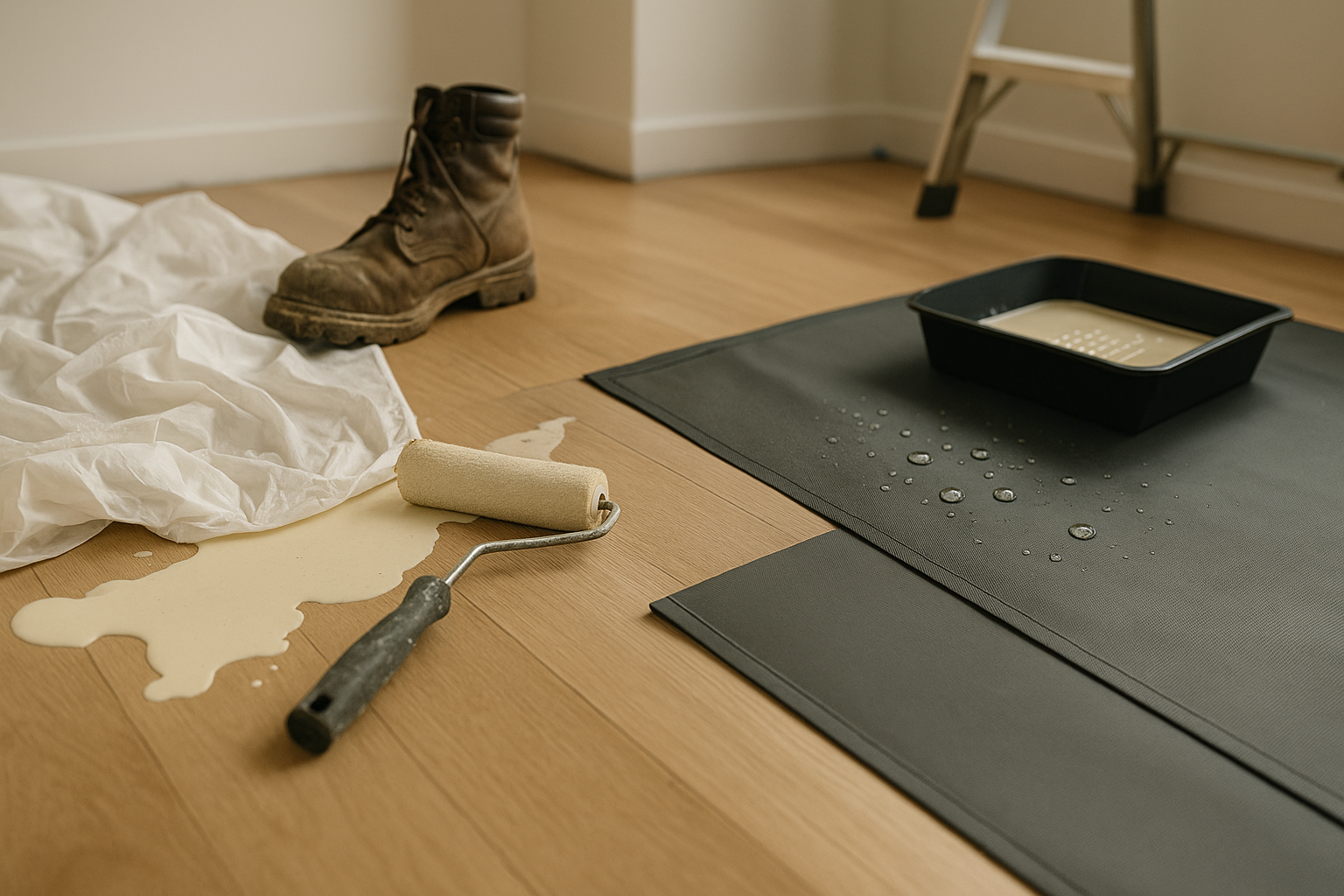
Old-school drop cloths serve their purpose—barely. But if you’re tired of tearing plastic, slipping on slick surfaces, or adding more waste to the landfill, it’s time for a smarter alternative.
Renegade’s polypropylene tarps offer unmatched durability, low weight, and true reusability—all while avoiding the toxic ingredients found in many standard drop cloth materials.
Whether you’re a contractor, a creative, or just clumsy with paint, we’ve got a better option waiting.
Remember, the biggest error most people make when choosing a drop cloth is assuming all materials are the same.
They’re not.
And when the stakes include your flooring, furniture, or professional reputation, the difference matters.
So ditch the waste, the slip-ups, and the single-use mindset. Find our tarps here. Or if you need something custom, call us today at (920) 348-4554 or reach out through our contact form. Let’s build something cleaner.
Interested in Our Fabrics?
Contact Us